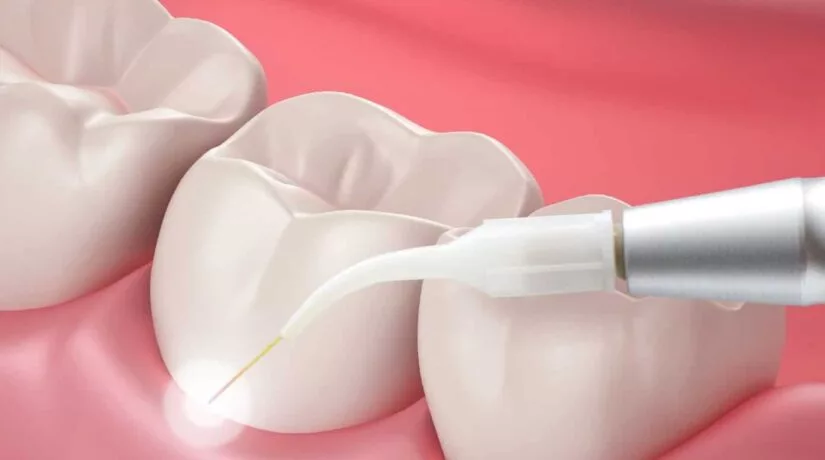![]() Bridle Trails
Family Dentistry - (425) 881-9333
Bridle Trails
Family Dentistry - (425) 881-9333
![]() Spring District
Family Dentistry - (425) 454-4298
Spring District
Family Dentistry - (425) 454-4298
![]() Bridle Trails
Family Dentistry - (425) 881-9333
Bridle Trails
Family Dentistry - (425) 881-9333
![]() Spring District
Family Dentistry - (425) 454-4298
Spring District
Family Dentistry - (425) 454-4298
Early stages of periodontal disease are best treated with nonsurgical therapy. Even in severe cases of periodontal disease, there are nonsurgical therapies that we recommend prior to surgery. Our doctor’s philosophy is to limit surgery in order to protect the overall tissue quality of a patient’s mouth.

Have you been diagnosed with gum disease? Concerned? Don’t be. We can help. With thoughtful treatment and careful maintenance, we can correct the problem and protect your healthy smile. Depending on your individual condition and needs, our doctors may recommend a treatment that’s known by several different names, such as root planing and scaling, periodontal cleaning, or “deep cleaning.”
The Problem:
A bacterial infection has become too “set-in” to be remedied by routine cleanings.
The plaque has solidified into calculus deposits that are sitting under the surface of your gums and continue to irritate the gums and spread infection.
The Solution:
Removing the calculus from below the gum line using special tools.
Smoothing the root surfaces to be sure plaque can’t continue to get traction.
Once the plaque and calculus are removed, your gums can finally heal.
Remember that gum disease treatment may require some follow-up maintenance and monitoring. More frequent cleanings will help protect your recovering gums and allow us to monitor your progress.
We Can Help You Beat Gum Disease
Each case of gum disease is different. If the infection is extensive, you may need additional help. But whatever the case, we can discuss your options and help you with a plan to regain control of your oral health. So don’t put it off any longer! Talk to us today about your options.

Periodontitis (chronic gum disease) is caused by a sticky film of bacteria called plaque. Plaque is always forming on your teeth, but if your teeth aren’t cleaned well, the bacteria in plaque can harden into tartar and cause the gum tissue to become inflamed. If left untreated, the gums will begin to pull away from the teeth, leaving deepening pockets where the bacteria can breed.
At that point, not only is it extremely difficult (if not impossible) to remove plaque and tartar with regular brushing and flossing, there’s also a risk of bone and tooth loss. Our doctors recommend scaling and root planing for patients diagnosed with periodontitis.
What Is Scaling And Root Planing Treatment?
Scaling and root planing is a two-part procedure to treat periodontitis. The scaling portion is when our doctors remove all of the plaque and tartar above and below the gum line, cleaning all the way down to the bottom of the pocket.
We then begin the second phase of treatment, which is root planing. Root planing smooths out the roots of your teeth to help your gums re-attach to them, while keeping bacteria, plaque, and tartar from re-adhering underneath the gumline. The process may take more than one appointment to make sure that your teeth are clean and healthy.
Aftercare Tips
When you see us for a follow-up treatments, we will want to check on the healing of your teeth and gums. In most cases, patients who had red or swollen gums find that the tenderness and bleeding from periodontitis are reduced or completely eliminated. If your gums respond well and remain stable, you won’t need any further treatment.

What Is Gingivectomy Surgery?
A gingivectomy is a procedure to remove a portion of the gum tissue from around a tooth or teeth. It may be performed to heal the effects of periodontal disease or to correct overgrown gingiva. It is one of a few procedures that can help reverse periodontal issues. A similar procedure is gingivoplasty, which only partially removes a section of gum tissue rather than the entire section.
How Are Gingivectomies Performed?
These surgeries are typically completed with a surgical scalpel, though in some cases a low-frequency laser is used. The diseased gum tissue is trimmed and removed, and then the remaining tissue is reattached around the teeth with stitches, then carefully cleaned. A local anesthetic keeps the patient comfortable during the procedure. The recovery process typically takes less than a month.
Ask Our Doctors If Gingivectomy Is Right For you
If you struggle with overgrown gum tissue or gum disease, a gingivectomy might be the solution to get your oral health back where it should be.

Advanced periodontal disease affects the gums and causes bone loss in the jaws, increasing tooth loss risk. After the tooth is gone, more bone loss will occur, providing less support for the surrounding teeth and endangering them. It’s a scary cycle. Luckily, in modern dentistry, techniques are available to regrow that lost bone to support teeth and dental implants. Guided tissue regeneration is one of these techniques.
Benefits Of Guided Tissue Regeneration
Bone and gum tissue, when healthy, fit snugly around the roots of our teeth. Guided tissue regeneration helps to restore lost bone and give the support back to those roots, increasing the chances of a patient being able to keep their natural teeth. This procedure can involve bone grafting, tissue banks, or synthetic materials, with the goal of stimulating new bone growth.